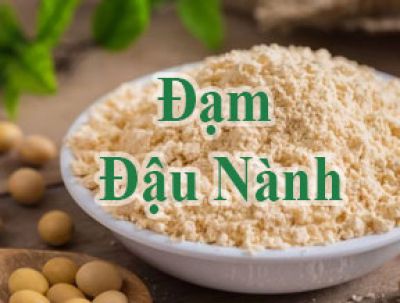Product Category Group
Featured News
Ứng Dụng Đa Dạng Của Bột Bắp Trong Chế Biến Thực Phẩm
Đạm đậu nành: Lợi ích sức khỏe và cách sử dụng hiệu quả trong chế độ ăn uống
Ứng Dụng Đa Dạng Của Bột Bắp Trong Chế Biến Thực Phẩm
Đạm đậu nành: Lợi ích sức khỏe và cách sử dụng hiệu quả trong chế độ ăn uống
Ứng Dụng Đa Dạng Của Bột Bắp Trong Chế Biến Thực Phẩm
Đạm đậu nành: Lợi ích sức khỏe và cách sử dụng hiệu quả trong chế độ ăn uống
Ứng Dụng Đa Dạng Của Bột Bắp Trong Chế Biến Thực Phẩm
Đạm đậu nành: Lợi ích sức khỏe và cách sử dụng hiệu quả trong chế độ ăn uống
Ứng Dụng Đa Dạng Của Bột Bắp Trong Chế Biến Thực Phẩm
Đạm đậu nành: Lợi ích sức khỏe và cách sử dụng hiệu quả trong chế độ ăn uống
Video
| https://www.youtube.com/watch?v=ulXq4VCSQsY |
| https://www.youtube.com/watch?v=gIazSYjw9g0 |
| https://www.youtube.com/watch?v=zamWiw3zJ_U |
| https://www.youtube.com/watch?v=M4DLObuJNm4 |


2222w-6208
Description
-It is a raw material for the manufacture of many other chemicals.
-It is a solvent used for plastics, nitrocellulose, dyes, oils and other chemicals.
-DEG is used as a desiccant for tobacco, waterproofing materials, printing inks and adhesives.
-DEG is an ingredient in brake fluid, lubricating grease, etc.
- Product information
- Facebook comment
- Review
| 1.Product Name/Other Name |
Product name: DEG-DIETHYLENE GLYCOL C4H10O3 Other names: 2,2′-Oxybis(ethan-1-ol); 2-(2-Hydroxyethoxy)ethan-1-ol; Diethylene glycol; Ethylene diglycol; Diglycol; 2,2′-Oxybisethanol; 2,2′-Oxydiethanol; 3-Oxa-1,5-pentanediol; Dihydroxy diethyl ether. |
| 2.Product information | IUPAC nomenclature : 2,2′-Oxydium(ethan-1-ol).
Chemical formula: C4H10O3;(HOCH2 CH 2 )2 O. CAS Number: [111-46-6] Origin: Taiwan. Packaging: 225 kg/drum. |
| 3.Application |
✅ Product product DEG-DIETHYLENE GLYCOL C4H10O3 is used in: -Is the starting material for making many other chemicals. -DEG is a solvent used for plastics, nitrocellulose, dyes, oils and other chemicals. -DEG is a desiccant for tobacco, waterproofing materials, printing inks and adhesives. -DEG is an ingredient in brake fluid, lubricating grease, etc. -DEG is used as a coolant, antifreeze. -DEG is a plasticizer in the production of paper, adhesives, etc. - As a solvent for the printing ink, paint, textile and dyeing industries, ... - As an intermediate for lubricants, unsaturated polyester resins, plasticizers for NC paints, drying paints and adhesives, polyester polyols for urethane foam. |
| 4. Identification |
-Volatility: volatile. -Color: colorless viscous. -Odor: odorless. -State: liquid. -Water Soluble: soluble in water. -Soluble in other organic solvents: alcohol, ether, acetone, and ethylene glycol… |
| 5.Instructions for use | Please contact us (here) so we can advise you best suited to your needs! |
| 6.Storage | Safety:
-Flammability: flammable. -Safety level for humans: Toxic. Some authors suggest a minimum toxic dose of 0.14 mg/kg body weight and a lethal dose of 1.0 to 1.63 g/kg body weight. Therefore, ethylene glycol should not be eaten or swallowed. Absorption through the skin is very low, unless it is used on broken or damaged skin. -Environmental safety: Storage conditions: Store in a cool place, away from heat. Keep away from direct sunlight and minimize sources of heat, sparks, or flames. Should be tightly covered to avoid loss due to evaporation. |
| 7. Imported/Distributed by | |
| 8.Other notes |
DEG-DIETHYLENE GLYCOL C4H10O3 is used in the production of unsaturated polyester resins, polyurethanes and plasticizers. DEG is used as a building block in organic synthesis, for example morpholine and 1,4-dioxane. It is a solvent for nitrocellulose, resins, dyes, oils, and other organic compounds. It is a wetting agent for tobacco, corks, printing inks, and glues. It is also a component of brake fluids, lubricants, decorative removers, artificial fog solutions, and heating/cooking fuels. In personal care products (e.g., lotions and creams, deodorants), DEG is often replaced by selected diethylene glycol ethers. Dilute solutions of diethylene glycol can also be used as a cryoprotectant; however, ethylene glycol is more commonly used. Most ethylene glycol antifreezes contain some % diethylene glycol, which is now a by-product of ethylene glycol production. Artificial fog solutions and heating/cooking fuels. |
|
0
( 0 review )
|
1
0 review
2
0 review
3
0 review
4
0 review
5
0 review
|
|
-
Very bad
-
Bad
-
Normal
-
Good
-
Very good
Related Products
Customer Support
Hotline: 0986 11 88 13
Sales consultant

Mr.A : 0986 11 88 13
Mr.A : 0986 11 88 13
Mr.A : 0986 11 88 13
Mr.A : 0986 11 88 13
Mr.A : 0986 11 88 13




